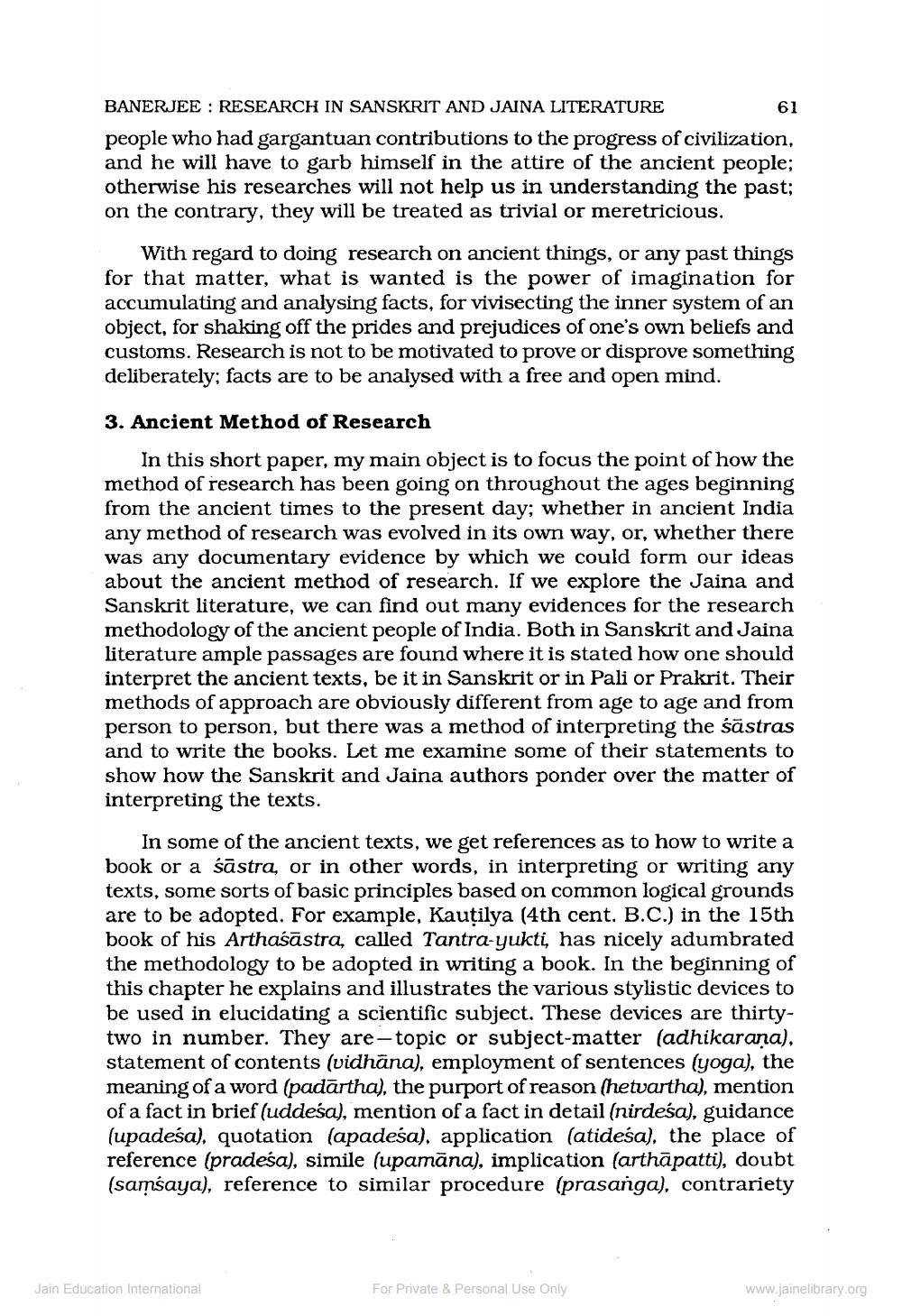________________
61
BANERJEE : RESEARCH IN SANSKRIT AND JAINA LITERATURE people who had gargantuan contributions to the progress of civilization, and he will have to garb himself in the attire of the ancient people; otherwise his researches will not help us in understanding the past; on the contrary, they will be treated as trivial or meretricious.
With regard to doing research on ancient things, or any past things for that matter, what is wanted is the power of imagination for accumulating and analysing facts, for vivisecting the inner system of an object, for shaking off the prides and prejudices of one's own beliefs and customs. Research is not to be motivated to prove or disprove something deliberately; facts are to be analysed with a free and open mind.
3. Ancient Method of Research
In this short paper, my main object is to focus the point of how the method of research has been going on throughout the ages beginning from the ancient times to the present day; whether in ancient India any method of research was evolved in its own way, or, whether there was any documentary evidence by which we could form our ideas about the ancient method of research. If we explore the Jaina and Sanskrit literature, we can find out many evidences for the research methodology of the ancient people of India. Both in Sanskrit and Jaina literature ample passages are found where it is stated how one should interpret the ancient texts, be it in Sanskrit or in Pali or Prakrit. Their methods of approach are obviously different from age to age and from person to person, but there was a method of interpreting the süstras and to write the books. Let me examine some of their statements to show how the Sanskrit and Jaina authors ponder over the matter of interpreting the texts.
In some of the ancient texts, we get references as to how to write a book or a śāstra, or in other words, in interpreting or writing any texts, some sorts of basic principles based on common logical grounds are to be adopted. For example, Kautilya (4th cent. B.C.) in the 15th book of his Arthaśāstra, called Tantra-yukti, has nicely adumbrated the methodology to be adopted in writing a book. In the beginning of this chapter he explains and illustrates the various stylistic devices to be used in elucidating a scientific subject. These devices are thirtytwo in number. They are-topic or subject-matter (adhikarana), statement of contents (vidhāna), employment of sentences (yoga), the meaning of a word (padartha), the purport of reason (hetvartha), mention of a fact in brief (uddesa), mention of a fact in detail (nirdeśa), guidance (upadesa), quotation (apadesa), application (atidesa), the place of reference (pradeśa), simile (upamāna), implication (arthāpatti), doubt (samsaya), reference to similar procedure (prasanga), contrariety
Jain Education International
For Private & Personal Use Only
www.jainelibrary.org




